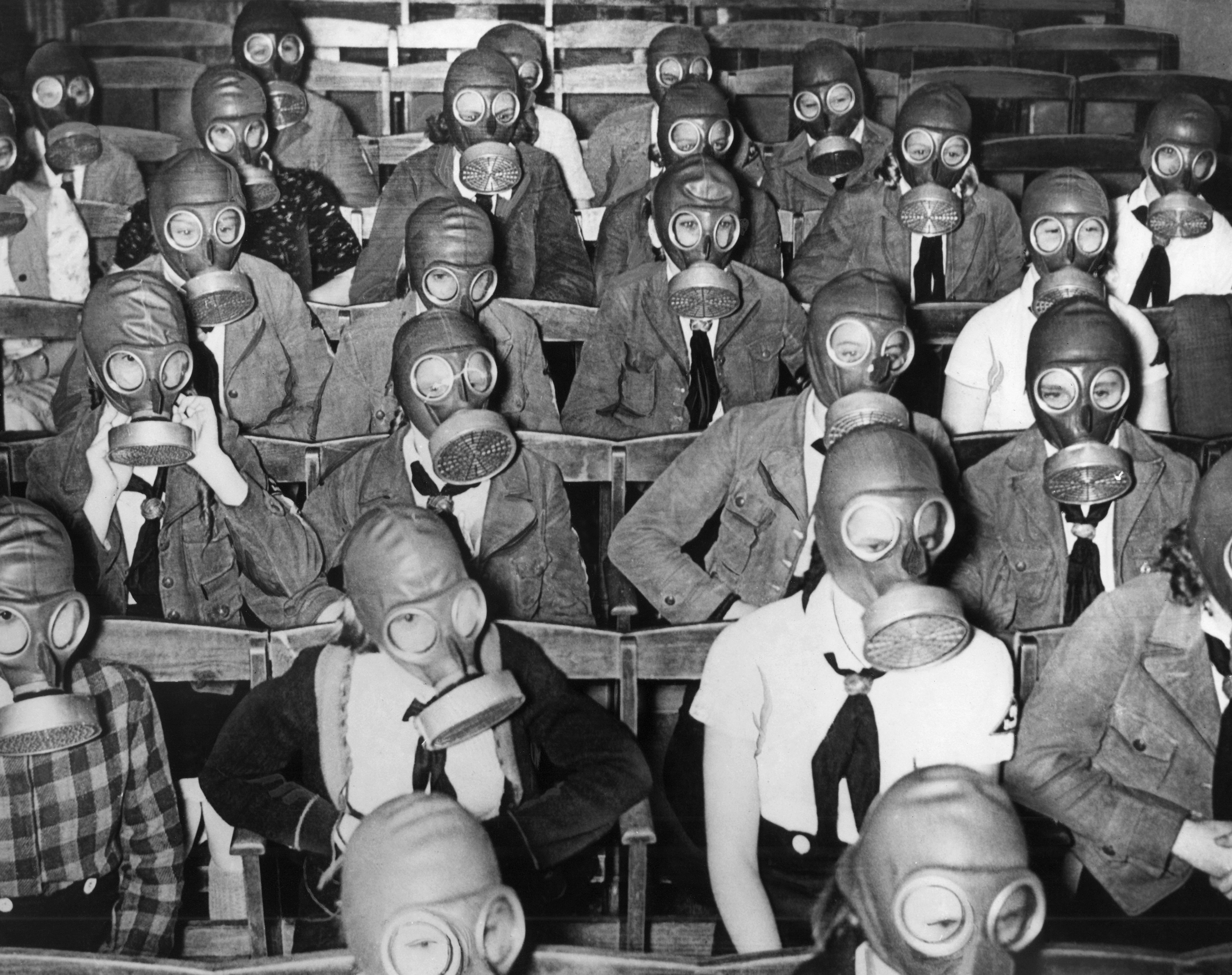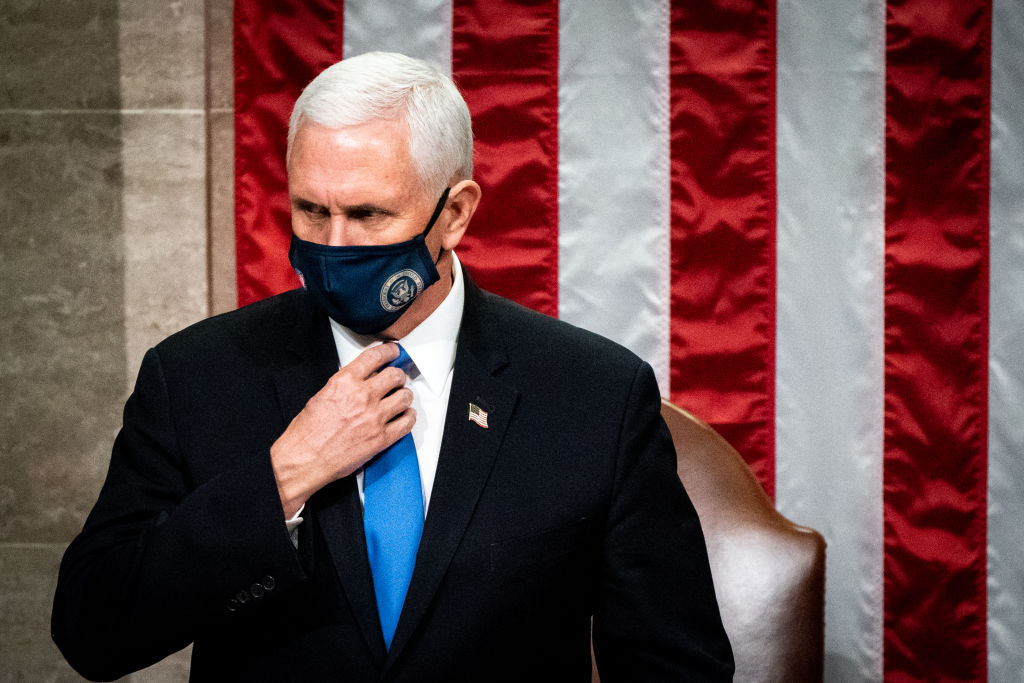Why nuclear Armageddon is a very real danger
The Cold War might be over, but nuclear brinkmanship is still going strong

At the height of the Cold War, the United States and the Soviet Union had thousands of nuclear weapons pointed at each other, many of them on hair-trigger alert. The prospect of nuclear war was a grim specter that hung over the entire civilized world.
As a teenager in the 1980s, I would lay in bed at nights thinking about Soviet intercontinental ballistic missiles lifting off from the Kartaly Missile Field, arcing over the North Pole, and landing in the United States. I knew the journey would take, more or less, 20 minutes.
Those that lived through the Cold War — myself included — were glad when it ended. Yet the nuclear danger never really went away, just the antagonism between the United States and what is now Russia. Now, slowly, that antagonism is creeping back — and with it, the possibility of nuclear war.
The Week
Escape your echo chamber. Get the facts behind the news, plus analysis from multiple perspectives.

Sign up for The Week's Free Newsletters
From our morning news briefing to a weekly Good News Newsletter, get the best of The Week delivered directly to your inbox.
From our morning news briefing to a weekly Good News Newsletter, get the best of The Week delivered directly to your inbox.
Since the end of the Cold War, the world has largely forgotten about nuclear weapons. Yet the United States still has 1,597 nuclear weapons deployed on submarines, aircraft, and missiles, the majority of them pointed at Russia. Russia has 1,582 nuclear weapons deployed — the majority aimed at the United States.
Tensions between the United States and Russia are the highest they've been in more than 20 years. Differences over Russia's invasion of the Ukraine, intervention on behalf of Syria's Assad regime, and support for other unpopular, authoritarian governments have pushed the two countries farther apart than they've been in decades.
That tension has been reflected in recent missile tests on both sides. In early November, Russia staged nuclear war games that saw the the launch of two submarine-launched ballistic missiles, a land-based ICBM, and nuclear-capable air-launched cruise missiles.
In late October and early November, the United States Strategic Command — the joint U.S. military command responsible for all things nuclear — tested a Minuteman III intercontinental ballistic missile, two Trident II D-5 submarine launched ballistic missiles, and flew strategic bombers to Spain and the South China Sea. That's all three legs of the nuclear triad — the force of missiles, submarines, and bombers — that ensures the U.S. strategic arsenal cannot be completely destroyed in nuclear attack.
A free daily email with the biggest news stories of the day – and the best features from TheWeek.com
Not to be outdone, on Nov. 14, Russia countered by firing two of its newest missiles, Bulavas, from its newest nuclear submarine the Vladimir Momomakh.
Both countries claim that such missile tests are to ensure the reliability of the existing stockpile. A missile is picked at random and launched — in the case of the United States, at Kwajalein Atoll in the South Pacific. Missiles are complex systems, and periodic testing is warranted.
Is this flurry of nuclear tests linked? Almost undoubtedly. Russia advertised that it was ready for nuclear war, and then the United States did the same. If tensions between the two continue to rise, we'll almost certainly see a renewed interest in keeping a larger proportion of missiles in both countries on regular alert — ready to fire.
Intentional nuclear war is rarely discussed. The doctrine of mutually assured destruction — which holds that a state can deter nuclear destruction by ensuring any attacker would also be destroyed — makes choosing nuclear war an irrational, downright crazy proposition.
Instead, accidental nuclear war — particularly in times of crisis — has always been the most likely way a nuclear war would start. Under intense pressure to use nuclear weapons before they are destroyed by an enemy's first strike, a country may "launch on warning" — a warning that could turn out to be phony.
In 1983 Stanislav Petrov, a military officer at a Soviet early warning base, was on watch when he received automated word the United States had launched a nuclear attack. Petrov could have passed word of the "attack" up to his superiors, who might have retaliated by launching the Soviet Union's own missiles.
Despite howling sirens and an urge to panic, Petrov, relying on his gut and knowing the system was prone to fault, instead reported the warnings as a malfunction. He was right: There were no American missiles, the system had indeed malfunctioned.
Tensions between the United States and Russia don't automatically make intentional nuclear war more likely. But unless the urge to put nuclear forces closer to a war footing is avoided now, it will be harder to avoid doing so in the future.
The harder it is to start the process of a nuclear strike, the harder it will be to trigger accidentally. Next time, there may not be a Stanislav Petrov to stop a technical glitch from turning into Armageddon.
Kyle Mizokami is a freelance writer whose work has appeared in The Daily Beast, TheAtlantic.com, The Diplomat, and The National Interest. He lives in San Francisco.
-
 Crossword: December 30, 2025
Crossword: December 30, 2025The daily crossword from The Week
-
 What have Trump’s Mar-a-Lago summits achieved?
What have Trump’s Mar-a-Lago summits achieved?Today’s big question Zelenskyy and Netanyahu meet the president in his Palm Beach ‘Winter White House’
-
 The most anticipated movies of 2026
The most anticipated movies of 2026The Week Recommends If the trailers are anything to go by, film buffs are in for a treat
-
 Bombing at girls' school in Kabul kills at least 50, including students
Bombing at girls' school in Kabul kills at least 50, including studentsSpeed Read
-
 Garland says DOJ is 'pouring its resources' into stopping domestic terrorists 'before they can attack'
Garland says DOJ is 'pouring its resources' into stopping domestic terrorists 'before they can attack'Speed Read
-
 Suspected Israeli cyberattack on Iranian nuclear site complicates U.S.-Iran nuclear deal talks
Suspected Israeli cyberattack on Iranian nuclear site complicates U.S.-Iran nuclear deal talksSpeed Read
-
 North Korea fires 2 ballistic missiles into sea
North Korea fires 2 ballistic missiles into seaSpeed Read
-
 U.S. airstrikes target Iranian-backed militia facilities in Syria
U.S. airstrikes target Iranian-backed militia facilities in SyriaSpeed Read
-
 Rochester police who killed Daniel Prude during mental health crisis won't face charges
Rochester police who killed Daniel Prude during mental health crisis won't face chargesSpeed Read
-
 Mike Pence's 'nuclear football' was also apparently at risk during the Capitol siege
Mike Pence's 'nuclear football' was also apparently at risk during the Capitol siegeSpeed Read
-
 Trump publicly attacked Pence during the Capitol riot knowing Pence was in trouble, GOP senator suggests
Trump publicly attacked Pence during the Capitol riot knowing Pence was in trouble, GOP senator suggestsSpeed Read